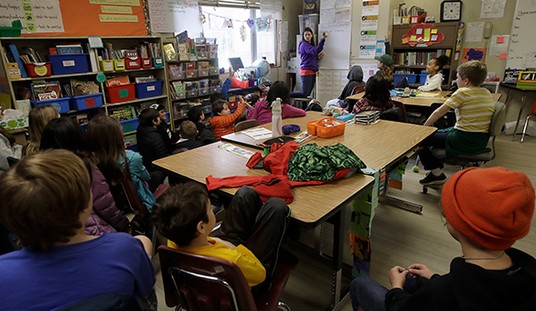The state hasn’t gone Republican since 1988. It’s often considered the cruel mistress of national elections; it certainly should’ve been viewed that way when Romney lost here in 2012. But with Donald Trump poised to be the Republican nominee; there is a good shot that the billionaire real estate magnate could win Pennsylvania—and it has some Democrats in the key counties worried.
The Keystone State is aptly described as Pittsburgh, Philadelphia, and Alabama in between. You’d think this would be a slam-dunk for Republicans. The state legislature is Republican. Up until recently, we had a Republican governor, and the GOP controls most of the state’s 67 county courthouses. By almost every measure, the state is red, but the collar counties around Philadelphia and Allegheny County, which houses Pittsburgh, usually decide how the state goes.
With Trump, you can expect Democratic circles insanely confident that Pennsylvania will remain a firm foundation in the left’s Northeastern blue wall. Yet, the state could be prime territory for Trump, and the Philly suburbs aren’t all that thrilled with Hillary Clinton either. FiveThirtyEight’s David Wasserman, who also posts for the Cook Political Report, listed his reasons for why Trump could win here:
I’d argue Pennsylvania has leapfrogged Colorado and Virginia as the next most winnable state for Republicans. In fact, it may be on pace to claim sole “tipping point” status.I arrived at this conclusion by calculating each state’s “six-cycle trend” — a measure of how much more Democratic or Republican-leaning each state has trended relative to the nation as a whole since 1992. To do this, I compared Obama’s 2012 two-party vote share in each state to the Democrat’s share in each of the five prior elections, then took the average of those differences, controlling for national swings and the number of four-year intervals.
[…]
As it turns out, Colorado and Virginia are among the top 10 fastest Democratic-trending states in the nation — they are, respectively, getting about 0.9 percentage points and 1.2 points more Democratic-leaning compared with the country every four years. By contrast, Pennsylvania has gradually migrated in the opposite direction. It’s gotten about 0.4 percentage points more Republican every four years.
[…]
Pennsylvania, where the projected Democratic share of the two-party vote would drop to 52.3 percent, would become the next most winnable state for Republicans after Florida (50.6 percent) and Ohio (51.9 percent). In fact, after Pennsylvania, the next most winnable states for Trump would be New Hampshire (52.9 percent) and Iowa (53.0 percent), followed by Virginia (53.2 percent), Wisconsin (53.4 percent) and Colorado (53.7 percent).
Western Pennsylvania is driving the state’s rightward drift — its voting patterns now resemble greater Appalachia’s more than those of the Philadelphia suburbs. Once dominated by steel towns and union Democrats, the region has reveled in a fracking/natural gas boom that has more recently experienced a downturn and has revolted against EPA regulations. Obama’s infamous “bitter clingers” remark in 2008 didn’t do Democrats any favors either.
[…]
1. The Economy — Voters are more likely to turn on the party in the White House when they perceive the economy to be doing poorly. At the moment, the economy is doing a lot better in Colorado and Virginia than it is in Pennsylvania. Gallup found that in 2015, Colorado and Virginia residents had the seventh- and eighth-highest economic confidence in the nation. Pennsylvania residents’ economic confidence was well below average. There’s also a much larger blue-collar manufacturing sector in Pennsylvania, which plays into Trump’s protectionist, “Make America Great Again” mantra. The Bureau of Labor Statistics reported that as of March 2016, 10.1 percent of Pennsylvania‘s nonfarm labor force was employed in the manufacturing or mining/logging sectors, compared with 6.6 percent in Colorado and just 6.1 percent in Virginia.
2. Demographics — Older, white voters without college degrees are the bedrock of Trump’s coalition, and Pennsylvania is the sixth-oldest state in the nation. As of 2014, its median age was 40.7 years, three years older than in Virginia and four years older than in Colorado, according to the census. Pennsylvania also has a much whiter electorate. According to the Census, as of 2014, 83 percent of its eligible voters were non-Hispanic whites compared with 78 percent in Colorado and 70 percent in Virginia.But here’s the kicker: According to the Census, just 29 percent of non-Hispanic whites age 25 and older in Pennsylvania held at least a bachelor’s degree, compared with 43 percent in Colorado and 39 percent in Virginia. That’s a massive disparity, and whites without a college degree have been among the fastest GOP-trending groups nationally. All of these arrows point to Pennsylvania as a much more favorable electorate for Trump
Recommended
The first point about the economy, making America great again, the large swath of disaffected manufacturing workers, and the anti-NAFTA sentiments also spills over into Ohio and the rest of the Rust Belt.
In the collar counties around Philadelphia, a key area in the state, Trump’s appeal seems to be percolating into these areas that have gone Democratic over the last ten years (via Dave Weigel/WaPo):
At the Bucks County Democrats’ first meeting since the April 26 Pennsylvania primary, one worry dominated: Donald Trump had done better than expected in this blue-leaning exurban expanse north and east of Philadelphia.At one polling place, these Democrats’ Republican neighbors — nice people, nothing like the Trump supporters they had seen throw punches at protesters — were proud enough to grab lawn signs.
“It was stunning,” said Stan Durey, 67, a former security analyst who works at a car dealership. “I just stood there shaking my head, going, ‘Really?’ It wasn’t two, it wasn’t three — it must have been 20 or 30 people walking away with Trump signs. To me, that’s an alarm bell.”
[…]
Causing additional worry for Democrats is that Republicans here have largely embraced Trump faster than expected. They have adopted his nothing-to-see-here spin to explain his gaffes and scandals. In particular, they view his apparent lack of interest in social issues as an opening in the suburbs, where — since the 1990s — once-dominant Republicans often lose moderate voters.
A May 10 poll by Quinnipiac University rattled some Democrats here, showing a one-point lead for Clinton — and voters trusting Trump more to handle terrorism and the economy.
[…]
Political analysts here surmised that most of the 60,000 voters who switched from the Democratic Party to the GOP before the primary intended to back Trump.
[With two more primaries at stake, tensions erupt between Sanders and Democratic leaders]
But conservative Democrats in western and central Pennsylvania had been making that switch for more than a decade. What surprised Republicans was Trump’s dominance in the Philadelphia suburbs, along the old “Main Line” of wealthy towns and the increasingly liberal Bucks County.
Certainly this is something that neither side expected, but let’s be somewhat cautious. In 2012, Mitt Romney was able to attract 30,000 people to a campaign rally in Bucks County, which is highly unusual, especially for a Republican presidential candidate. Then again, everything has been turned on its head this election cycle—and Clinton would have to spend money in areas where Democrats don’t need to worry. According to a Morning Consult poll, Trump is improving among Independents, women, and moderate voters.
Amy Walter, National Editor for the Cook Political Report, mentioned on Face the Nation earlier this month that Trump has serious work to do with female voters, but she did say that the focus groups she sat down with in suburban Philadelphia and Pittsburgh are not in love with Clinton. Moreover, there doesn't seem to be any inclination that Hillary is pulling Republican women in these areas over to the dark side.
“They are finding an easier way to excuse his [Trump] behavior than to accept Hillary Clinton,” she said.
























Join the conversation as a VIP Member